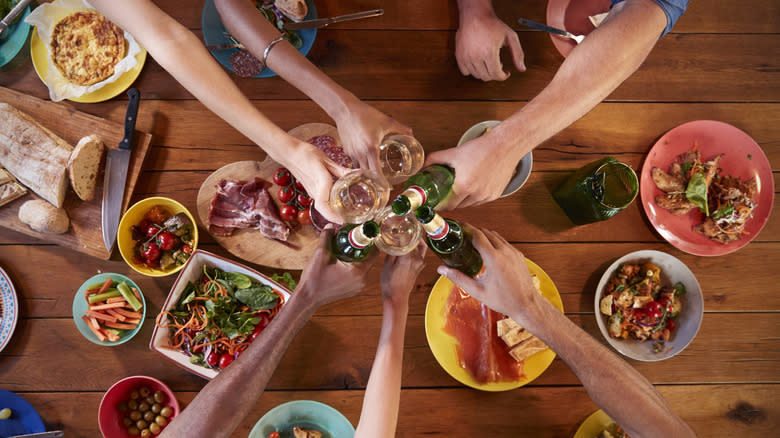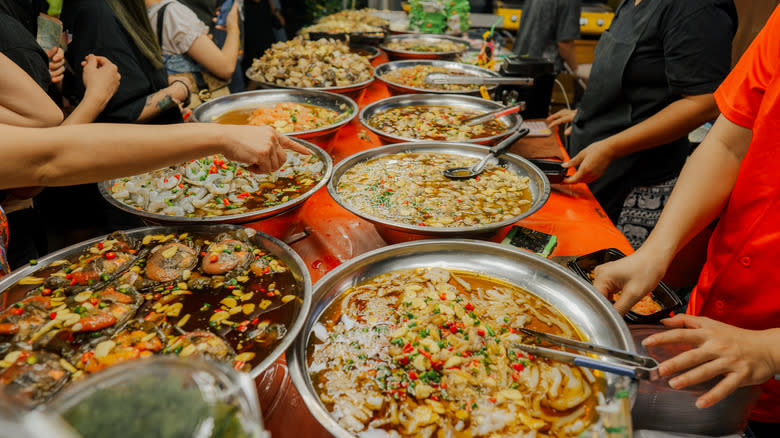Why Restaurants Push Back On Parties Of Six And Larger

Whether there's cause for celebration or you simply want to spend a night out with loved ones, a restaurant tends to be the go-to meet up spot. Sure, your guest list may expand quickly, but the more the merrier, right? Although you may not want to leave anyone out, the place you're going to probably does. We spoke to an expert who dished out the details on why restaurants don't like to serve parties of six or more.
Sure, there's a handful of eateries in New York and Los Angeles that are great for large groups, but if you don't live nearby or can't get a spot, you'll have to improvise. According to Darius Green, director of operations at Mad Room Hospitality, bigger parties tend to put a strain on the employees at a majority of places. "Most restaurants tend to focus on smaller parties of two to four people because it's easier to manage standard table sizes, and it's less demanding on the kitchen and waitstaff," he explains.
With an influx of orders coming in all at once, it can be difficult for the kitchen to stay caught up, especially since they still have meals to prepare for other patrons. This has always been a tricky situation, but it's become especially hard since the pandemic. Though the restaurant industry job pool has returned to pre-COVID levels, many establishments are still understaffed and unable to keep up with the surging demand from customers.
Read more: Restaurant Foods That Always Taste Better Than What You Make At Home
Follow These Tips When Dining With Larger Groups

Darius Green suggests preparing ahead to make things easier for everyone. "To ensure everything is set up perfectly for your group, it's always best to call ahead or make a reservation," he says. Giving a manager the exact number in your party and the time you'll be there allows them to know how much staff they should have on hand and when to expect a rush of orders in the kitchen.
When planning, Green believes you should choose times when there won't be a crowd. "Popular dining hours, like noon to 2 p.m. for lunch and 5 to 7 p.m. for dinner, can be very busy," he explains. "Opting for slightly off-peak times can enhance your dining experience." Having a large party at an emptier establishment reduces the logistical nightmare that occurs when over six people show up at the busiest time of day. Restaurants are split into sections, with each server getting an almost equal amount of seats. If your group spills over into another section, it throws off the entire ecosystem and can get confusing for the waiters whose sections have been moved around.
More than anything, have clear communication with the business as early as you can, suggests the hospitality expert. If you're upfront about the number of guests you'll be having (tell any last-minute RSVPs to kick it to the curb) and the needs they may have, things will run smoothly for both the staff and your party.
Read the original article on Tasting Table.


